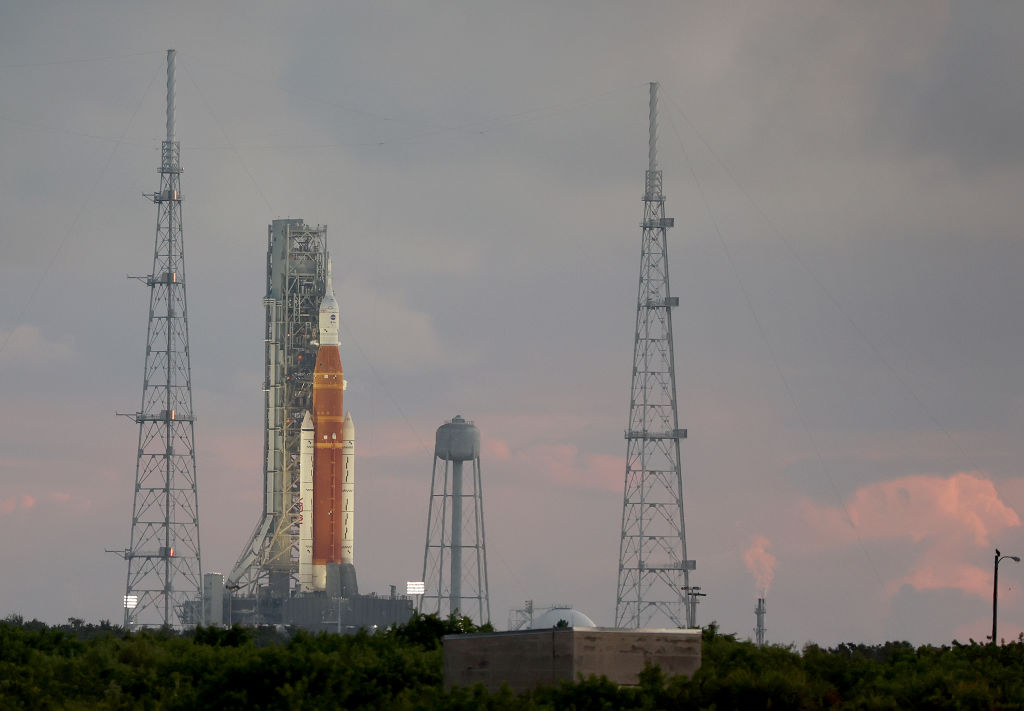What was scheduled to be a day of triumph as NASA launched America back to the moon instead turned into a letdown as the launch of the Artemis I unmanned rocked was delayed until at least Friday.
The launch had been scheduled for a two-hour window beginning at 8:33 a.m., according to USA Today.
The unmanned mission would send three dummies into space along with the spacecraft NASA plans to use when it sends humans to the moon.
“The launch director halted today’s Artemis I launch attempt at approximately 8:34 a.m. EDT. The Space Launch System rocket and Orion spacecraft remain in a safe and stable configuration,” NASA said in a statement, New Atlas reported.
“Launch controllers were continuing to evaluate why a bleed test to get the RS-25 engines on the bottom of the core stage to the proper temperature range for liftoff was not successful, and ran out of time in the two-hour launch window. Engineers are continuing to gather additional data,” the statement said.
A hydrogen leak appeared to take place in the same place as a problem noted in the spring, according to USA Today. A second leak also appeared in an area that had concerned officials in June.
Stops and starts had marked NASA’s efforts to fuel the Space Launch System rocket with almost 1 million gallons of super-cold hydrogen and oxygen, according to Fox Business.
According to CNN, NASA engineers had been alarmed by the presence of frost on an inner stage flange. At one point, officials feared it it meant there was a crack in the tank, but then decided it was a crack in the foam around the tank, and no leak took place there.
Engineers had also been working to troubleshoot an 11-minute delay in communications between NASA’s ground systems and the Orion spacecraft.
Thunderstorms near Florida’s Kennedy Space Center had already put preparations behind schedule.
Although the next window to launch is Friday, it was unclear Monday whether NASA would be ready to launch.
NASA’s Artemis program includes a plan for manned lunar exploration in 2024 and 2025 aboard the Artemis II and Artemis III.
Monday’s launch was designed to test rocket systems that would be used in the missions, according to USA Today.
NASA has painted the mission both in terms of diversity as well as science, according to The New York Times.
“It’s a future where NASA will land the first woman and the first person of color on the moon,” NASA administrator Bill Nelson said earlier this month.
“And on these increasingly complex missions, astronauts will live and work in deep space and will develop the science and technology to send the first humans to Mars,” he said.
This article appeared originally on The Western Journal.

























 Continue with Google
Continue with Google